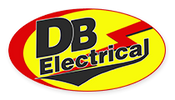Utility Terrain Vehicles (UTVs) are the hard-working cousins of ATVs. While ATVs are popular for recreation, UTVs are preferred for chores such as hauling, pulling and clearing. Also known as side-by-sides (SxS), recreational off-highway vehicles (ROV) and recreational utility vehicles, UTVs are easily differentiated from ATVs because they allow two people to sit side by side, hence the name. Typically, UTVs are larger and more powerful vehicles than ATVs.
UTV Electrical System Maintenance
Keeping your UTV ready for work means staying on top of electrical system maintenance. The electrical system is critical to the operation of your UTV. Failure of the system can lead to anything from poor performance to outright failure. If you depend on your UTV to get work done, it’s essential to keep the electrical system in perfect condition.
UTV Electrical Components
Battery
The battery is probably the first component most people think about when it comes to any vehicle. That’s because many people have had experience with a dead battery in their car. The signs of a failing UTV battery are similar to a bad car battery. You may have problems with the start of your UTV, hear a clicking sound or experience fading and flickering lights. If you experience any of these signs, you should get your battery checked with a voltmeter.
Alternator
The second most commonly known electrical component is the alternator. The alternator generates power to keep the battery charged and electrical accessories operating. Because the battery and alternator essentially work as a team, it’s important that both components are working at full capacity. A weak alternator can impair a strong battery and vice versa. Signs of a failing alternator are similar to a bad battery. They include hard starting, stalling and fading lights. With a bad alternator, you may also hear whining or grinding noises or sense burning smells.
Solenoid Relays
The purpose of the solenoid relay is not as well-known as the battery or alternator, but it plays a significant role that is essential to electrical system performance. This component acts as an electromagnetic switch that completes the circuit to engage the starter. Many signs of a bad solenoid relay are similar to a failing battery or alternator, such as failure to start the UTV and clicking sounds. A couple signs that are unique to solenoid relays include a noticeable single click sound and the starter not disengaging after releasing the key. These are signs the switch action is becoming unreliable.
Voltage Regulators
The voltage regulator is most appropriately named. It regulates voltage throughout the electrical system to prevent surges from damaging electrical components and accessories. Signs of a failing voltage regulator are also similar to other failing components. One more specific sign is lights dimming and then brightening depending on whether you’re idling or accelerating.
Finding the Failing Electrical Part
Sometimes determining which electrical component in a UTV is failing takes a bit of investigative work because many of the signs are similar. It should be stressed, however, that a UTV electrical system is kind of like a chain in that a weak link can harm the entire system. That’s why it’s Important that each electrical component is working at full capacity. When everything is working in harmony, you will have the reliability you need from your electrical system to take your UTV on any work task that needs to be done.
Related Articles
5 Times to Upgrade to a High Output Alternator
Why My Alternator Died So Quickly
5 Times a Wire Alternator is a Good Choice


